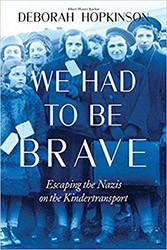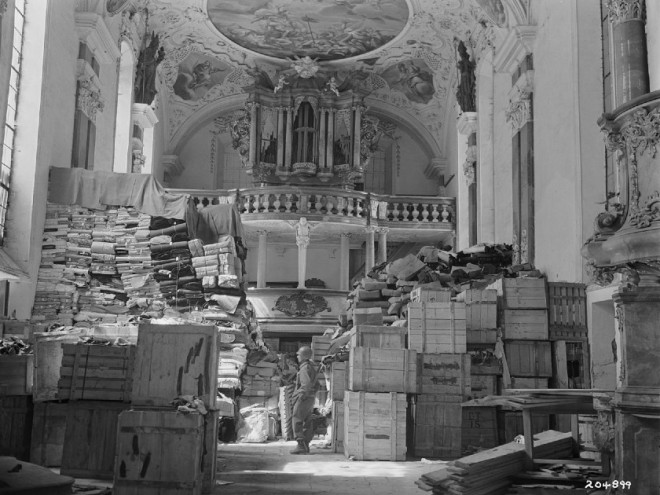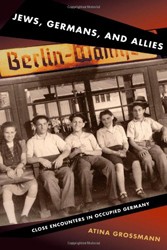Deborah Hopkinson’s account of Jews who managed to survive and even work against the atrocities of the Holocaust includes many photographs. The first one appears before the title page, setting the tone for this collection. It shows several members of the Warsaw Ghetto resistance being arrested by SS troops. Most raise their hands over their heads, but one man has instead raised his fist as an “anti-fascist symbol of solidarity and defiance…”, according to the caption. Hopkinson has written her book with a specific educational purpose in mind: documenting, explaining, and elevating Jews’ struggles for survival in Nazi Germany and the heroism of Jewish resistance. She carefully presents the odds against success for those choosing this path and she acknowledges the role of chance in any one individual’s life. There are no philosophical theories or religious statements of faith in her deeply respectful chronicle of courage, only stories of specific people and the circumstances that determined their responses to terror.
Rather than merely depicting a connected series of personal memories, the book forms a comprehensive method for teaching young readers about the Holocaust through the lens of specific encounters and their outcomes. In a “Dear Reader” letter at the beginning of the book, Hopkinson establishes her purpose and offers a clear introduction to the book’s structure. Each section focuses on one geographical area: Germany and the Netherlands, France, and Poland. The key individuals at the core of each section are presented in brief biographies before the section begins. Throughout the book, blocks of text with links to additional resources are marked as “Look, Listen, Remember.” Within each chapter, meaningful subtitles, often drawn from the survivors’ words, help to orient the reader.
This ambitious book does not presume that readers bring previous knowledge of its subject. There are lists of key dates, numerous photographs with detailed captions, and thorough historical background material integrated into the survivors’ stories. Readers learn about the Warsaw Ghetto and the uprising organized there as well reading the testimony of different individuals who played a role. Certain survivors had unusual experiences, such as those who remained concealed within Germany and others who were protected by the famous Bielski brothers, Jewish partisans who hid in the forest. When Paula Burger refers to Tuvia Bielski as “a giant of a man,” she recounts not only the physical impression he made but the enormous legacy of Jewish strength that the book’s accounts collectively memorialize.
Hopkinson does not avoid difficult issues, although she frames them in a way that young readers can process. The Jewish councils, organized by the Nazis to facilitate the process of genocide, faced seemingly impossible choices. The author gives many examples of Jewish council members who did their best to subvert the Nazis’ plans. She also relates how Adam Czerniakow, the head of the Jewish Council in the Warsaw ghetto, took his own life rather than enable the deportations of his fellow Jews. The agonizing decisions forced upon parents in order to protect their children also feature in many of the survivors’ memories, but so does the emotional support that those parents offered even as they faced their own deaths. When Chella Velt recalls her father’s words before they said goodbye forever, Hopkinson intuits that “[h]is strength and love sustained her for her entire life.”
While many non-Jewish German, Dutch, French, and Polish people collaborated with the Nazis, either eagerly or through indifference, others risked their lives to shelter Jews and challenge Nazi authority. Hopkinson is honest about the statistics — there were more enablers than protectors in Germany and the occupied countries — but she also describes the almost unbelievable heroism of those who made moral choices in a climate of hatred nurtured by centuries of antisemitism. Every survivor who benefited by this humanity expresses great reverence for those who defied the norm.
Survivor and historian Jacob Presser articulates the book’s objective most clearly in the introductory section: “The dead must be able to speak…and anyone who lets the dead remain silent allows them to die twice, and I have simply refused to permit that.” Hopkinson lets the dead as well as the remaining living speak in strong and clear voices.
Emily Schneider writes about literature, feminism, and culture for Tablet, The Forward, The Horn Book, and other publications, and writes about children’s books on her blog. She has a Ph.D. in Romance Languages and Literatures.




